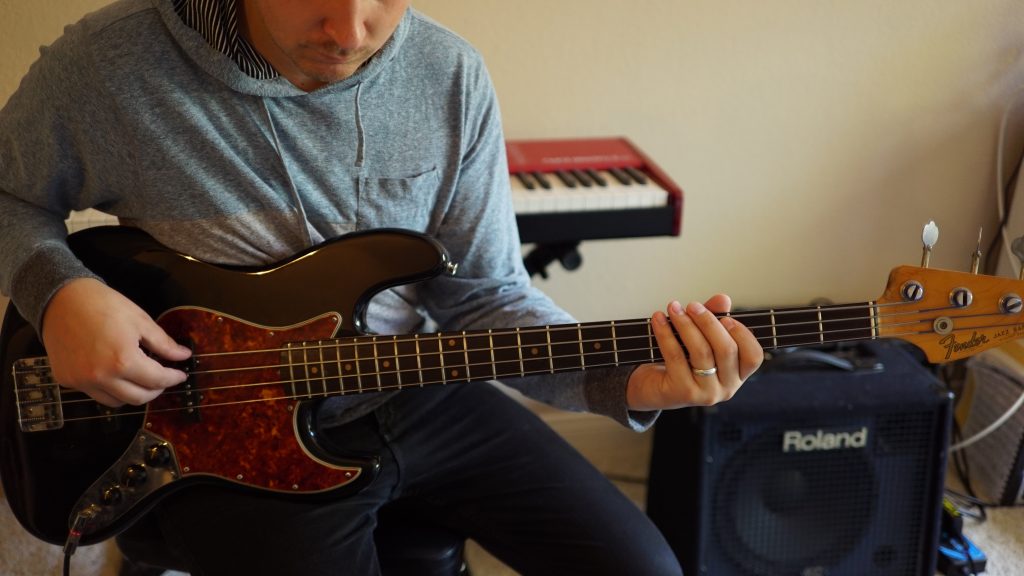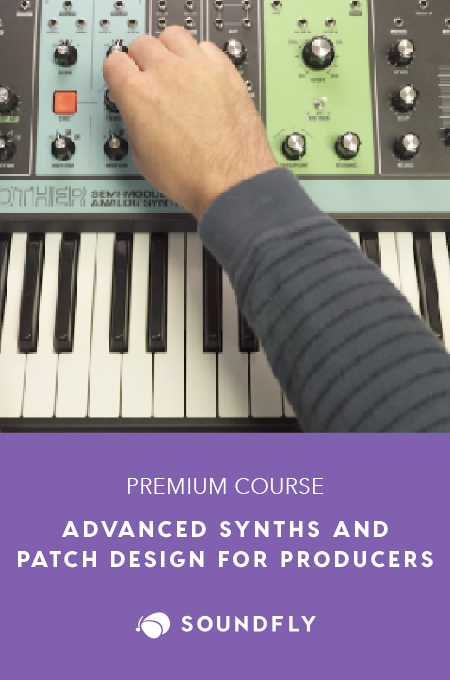
Though I believe wholeheartedly that your tone is mostly in your fingers, the choices you make as a musician on gear, style, and technique will go a long way in shaping your sound. One option that’s pretty unique to bassists, though, is how many strings they want under their hands (sure a guitarist can go in search of an 8-string axe, but it’s not nearly as common a choice as a bassist considering whether to use 4, 5, or 6 strings). Though the four-string bass is tried and true, certain styles of music may call for extended range basses. Through the years, I have at times favored each of them, and hope to offer some insight by sharing some of what I learned.
Like the majority of bassists out there, my first instrument was a classic four-stringer. It was easy to manage, and it was a great place to start my journey of mimicking John Paul Jones. It served me well in the beginning, but as my tastes in music changed, so too did my choice in instruments.
After a few years of playing, I had gotten into increasingly technical styles (moving from classic rock to prog and metal) and noticed that most of the guys in those bands played five and even six-string basses. I was easily won over by the perception that I needed more strings to play heavier music (disregarding Cliff Burton’s contributions to the bass world).
At the age of nineteen, I financed a Spector Euro 5Lx with my local music store. Though that decision was probably a mistake — it turns out the nicer the guitar, the more likely it’ll get stolen — the bass itself was amazing. However, looking back on my time with that instrument, I never really felt at home on it. That likely has more to do with my abilities as a player than the bass itself, but I don’t think I ever truly used that low B string enough to explore its full potential.

Moving on from the Spector, I made note of how my musical tastes had transformed. Now I was into jazz and fusion, heavily-influenced by Matt Garrison, Tony Grey and Janek Gwizdala (that link features Janek jamming with the instructor of our songwriting course, Oli Rockberger!). All of those guys typically played five or six-string basses tuned E to C, but I was determined to get used to that low B, so kept it and decided to add a high C. Thus, it was six-string time.
I ended up paying an arm, another arm, and a leg for a Ken Smith bass. It was my first and maybe last boutique instrument. Initially, I thought it was perfect for what I wanted to do. I was transcribing guitar, piano, and horn solos, and the extended range gave me the ability to play most of that stuff in the proper register. I was playing solo and chordal arrangements of tunes and this bass allowed me to play a wider range of harmonic ideas. It was beautifully constructed and really sang but when it came down to it, it wasn’t for me.
Firstly, it was huge. The fretboard absolutely dwarfed my hands, which is really saying something, considering how I’m constantly made fun of for my full-time catcher’s mitts. Maybe more significantly, I noticed I was overwhelmed with options. Anytime I improvised, I would wind up in the higher end of the neck and the groove would be swallowed up by my second-guitar-style playing. Once again, that may be more of an indictment of my playing at the time than the instrument, but the bottom line is that I realized I needed something different.
So I scaled back to a much cheaper Ken Smith burner five-string and of course, tuned it E to C. I felt like this was it for a while. The weight was right, the bass was super playable and sounded great, especially after I upgraded the electronics. I could still play the chords I wanted to and felt at home on the instrument. By now I was using an octave pedal, so I didn’t totally miss the low B string.
+ Read more on Flypaper: “A Quick Guide to Introducing Bass Chords into Your Playing”

My college days were winding down and I was about to enter the bittersweet reality of the career musician. I was hell-bent on trying to sustain a living as a bass player, but realized that there were only a handful of guys doing what I hoped to be doing, and they already had that corner covered. I still hadn’t really found my own voice and I reconciled myself to the fact that I probably wasn’t going to find it on this particular instrument and more importantly, in this particular style.
So finally, I went all the way back to the bass I started on — a 1963 Fender Jazz that my father had bought in the ’70s for 400 bucks. It sat in my family’s basement for years before I sat in my family’s basement for years learning to play it.
It’s worn in, fits like a glove, and sounds like nothing else I have ever played. It suits my stylistic needs as someone who primarily plays supportive, warm bass lines, but still gives me room to stretch out when it’s appropriate. Most importantly, I finally sound like me — probably more of a comment on the years spent learning to play than on the bass itself, but it is a huge part of my musical personality.
+ Read more on Flypaper: “5 Underrated Bassists You Need to Check Out”

Looking back, I’m glad I had some time with all of those basses before finally coming back to the Fender. Each one helped me learn something new and and allowed me to explore who I am as a musician. I’m not saying I would never play an extended range bass again — digging into Thundercat’s music has me seriously considering adding a six-string back into my musical quiver. But for now and for me, four feels right.
If there’s a moral to this story, I suppose it’s that there isn’t always one right path to finding your perfect instrument. The more you develop as a musician, the more you understand your own needs. There’s nothing wrong with tossing a more expensive, highly-acclaimed boutique piece aside in favor of something that feels right to your fingers. Don’t expect every instrument you pick up to be Excalibur, and don’t be afraid to explore your options when those opportunities present themselves.
Now it’s your turn to find what home feels like for you on your own bass. Spice up the sound you love with some chords!



